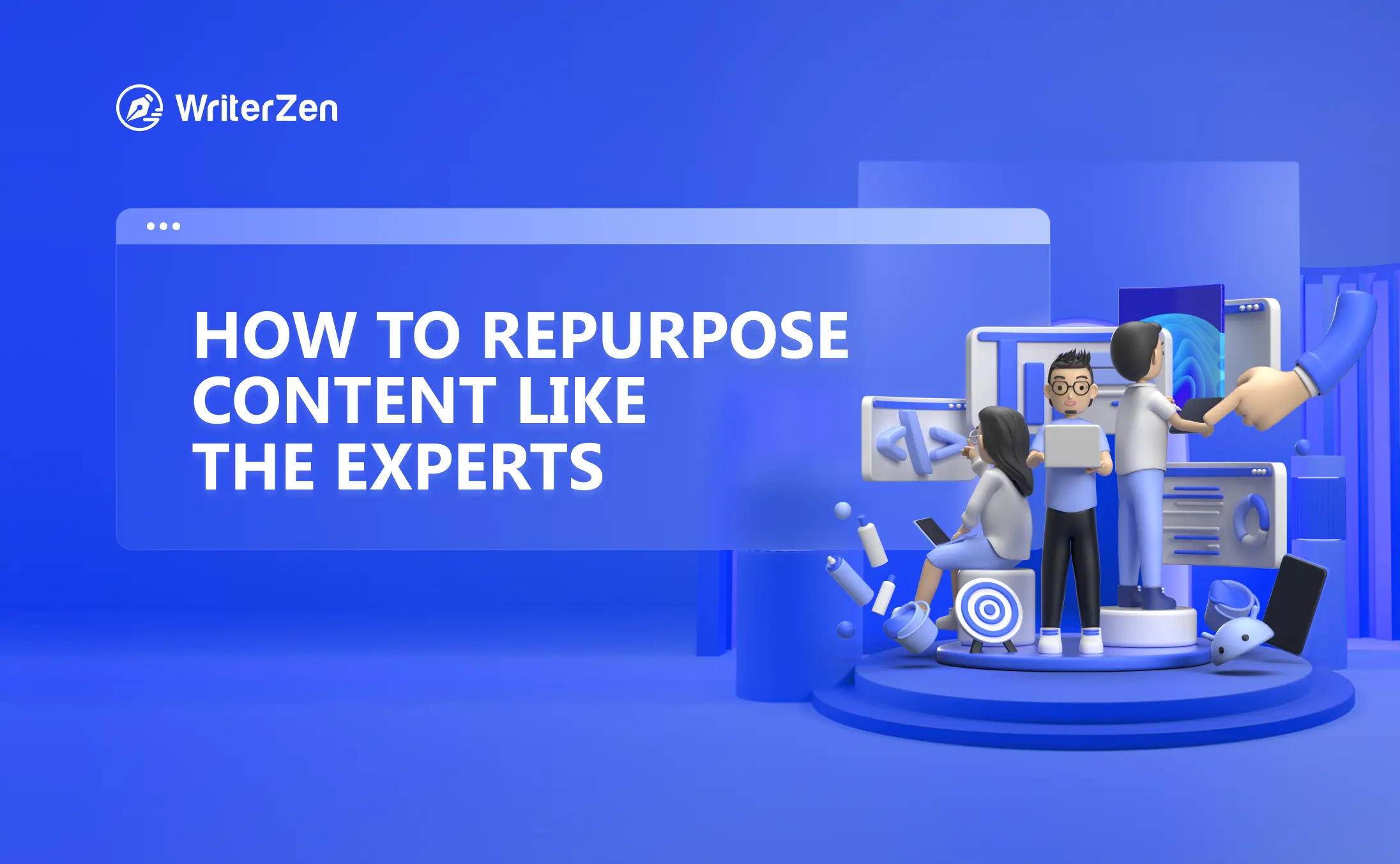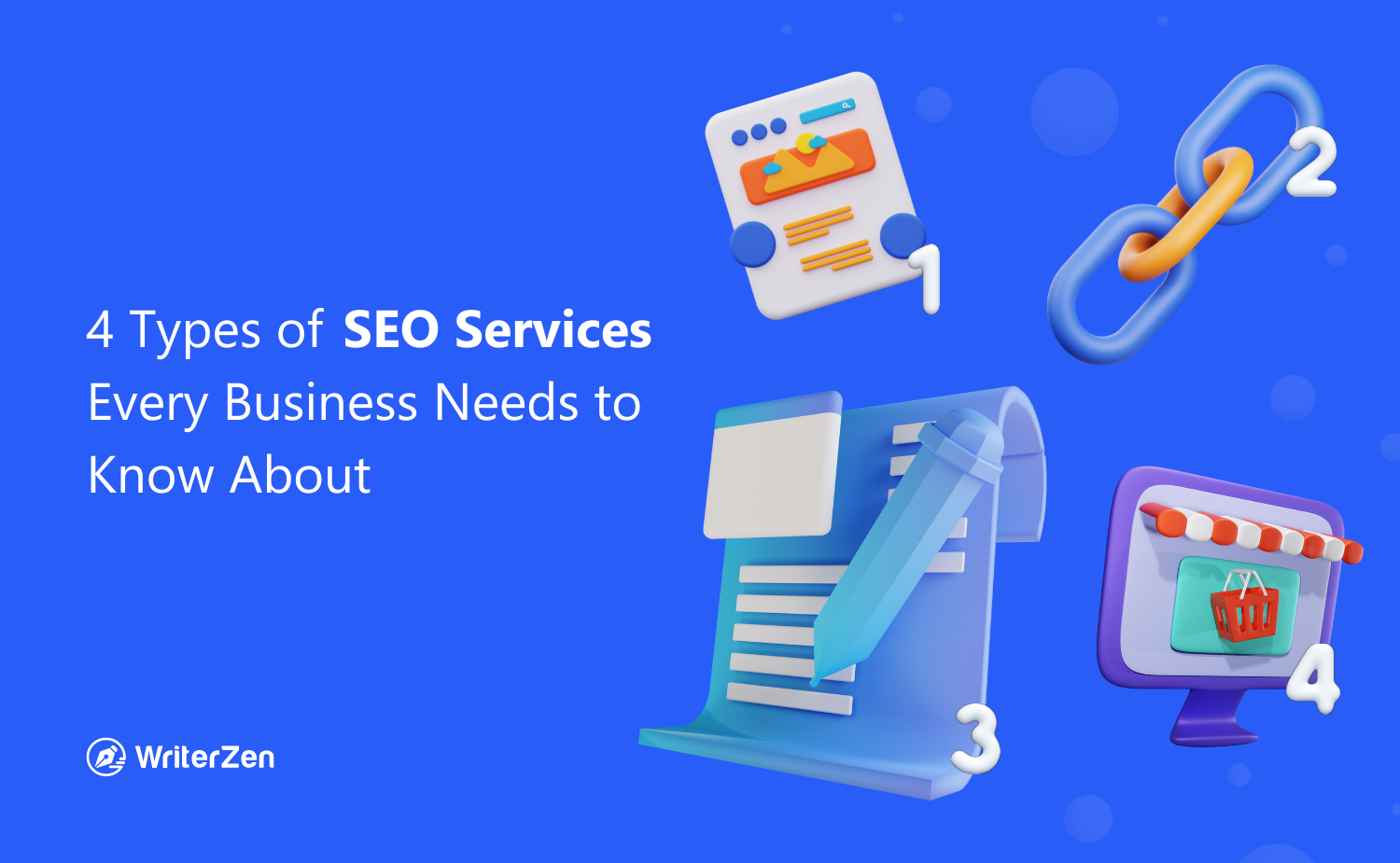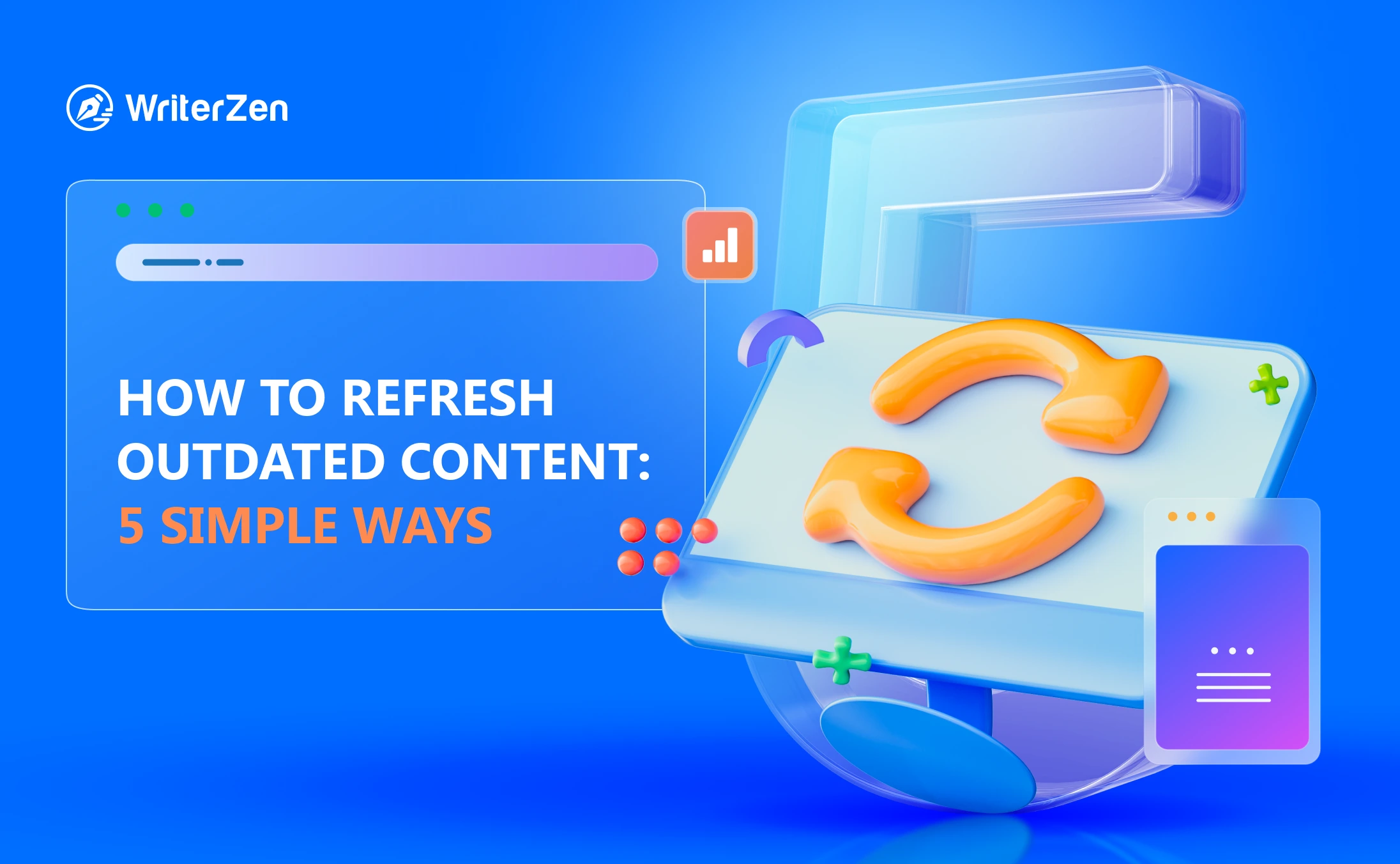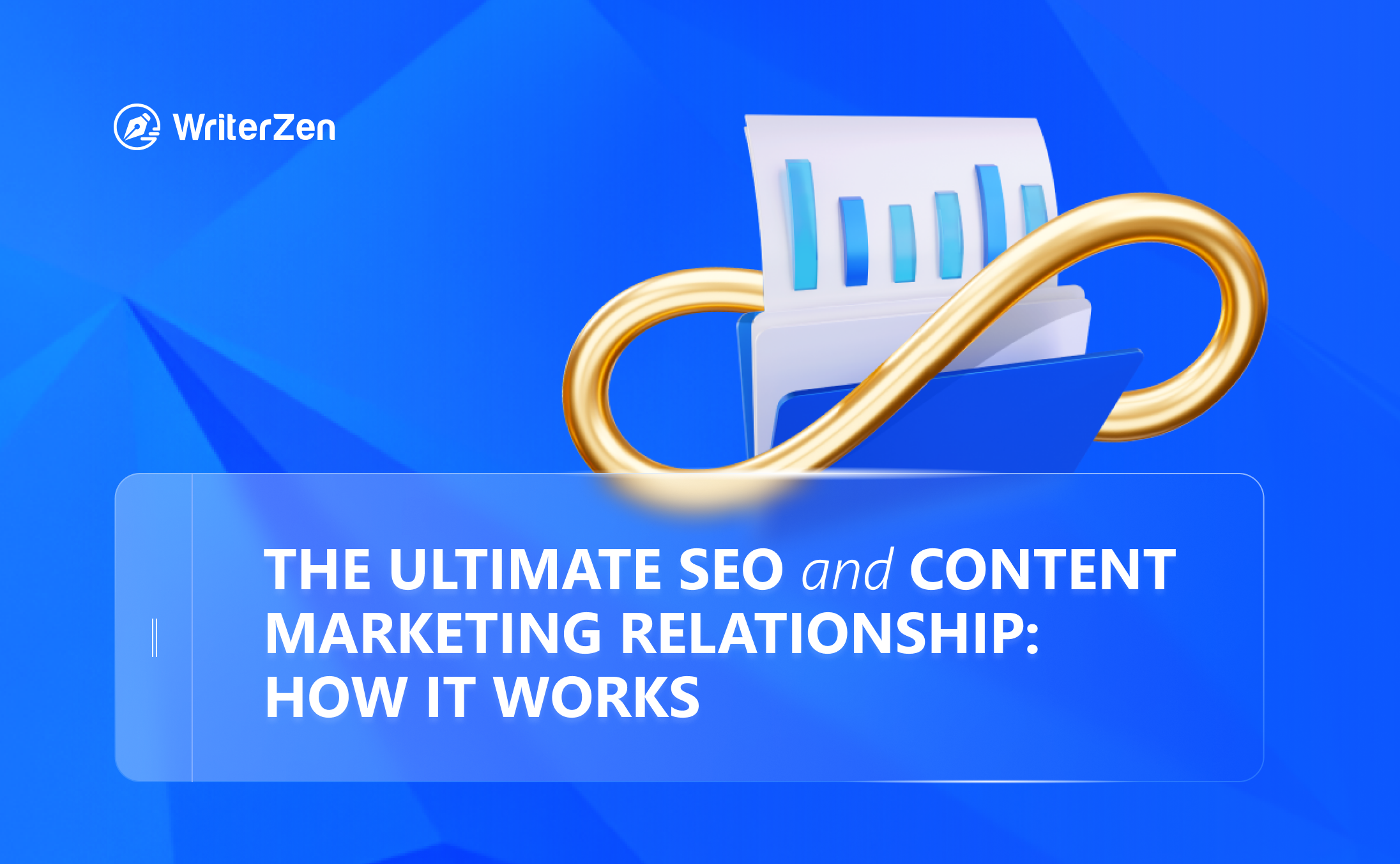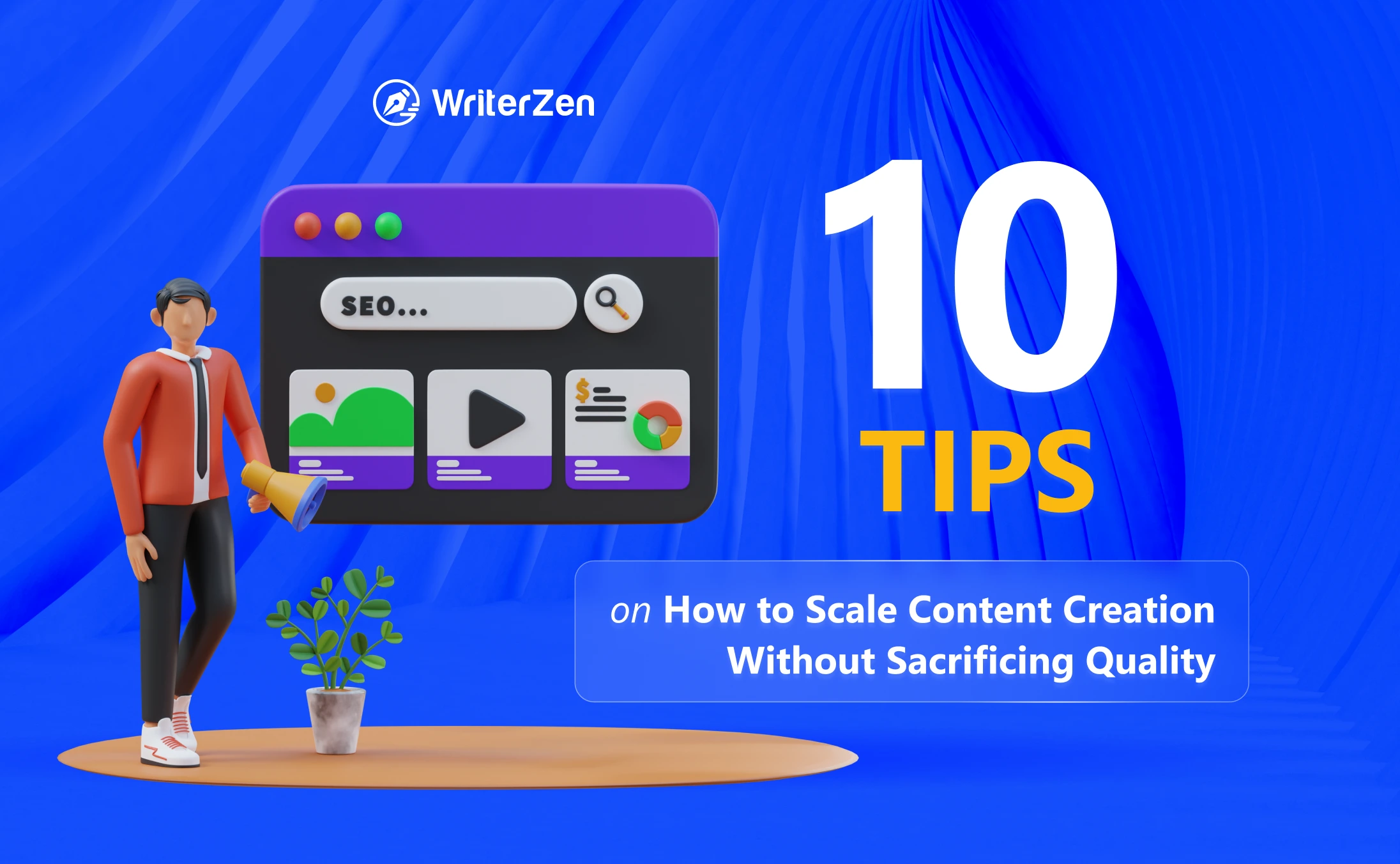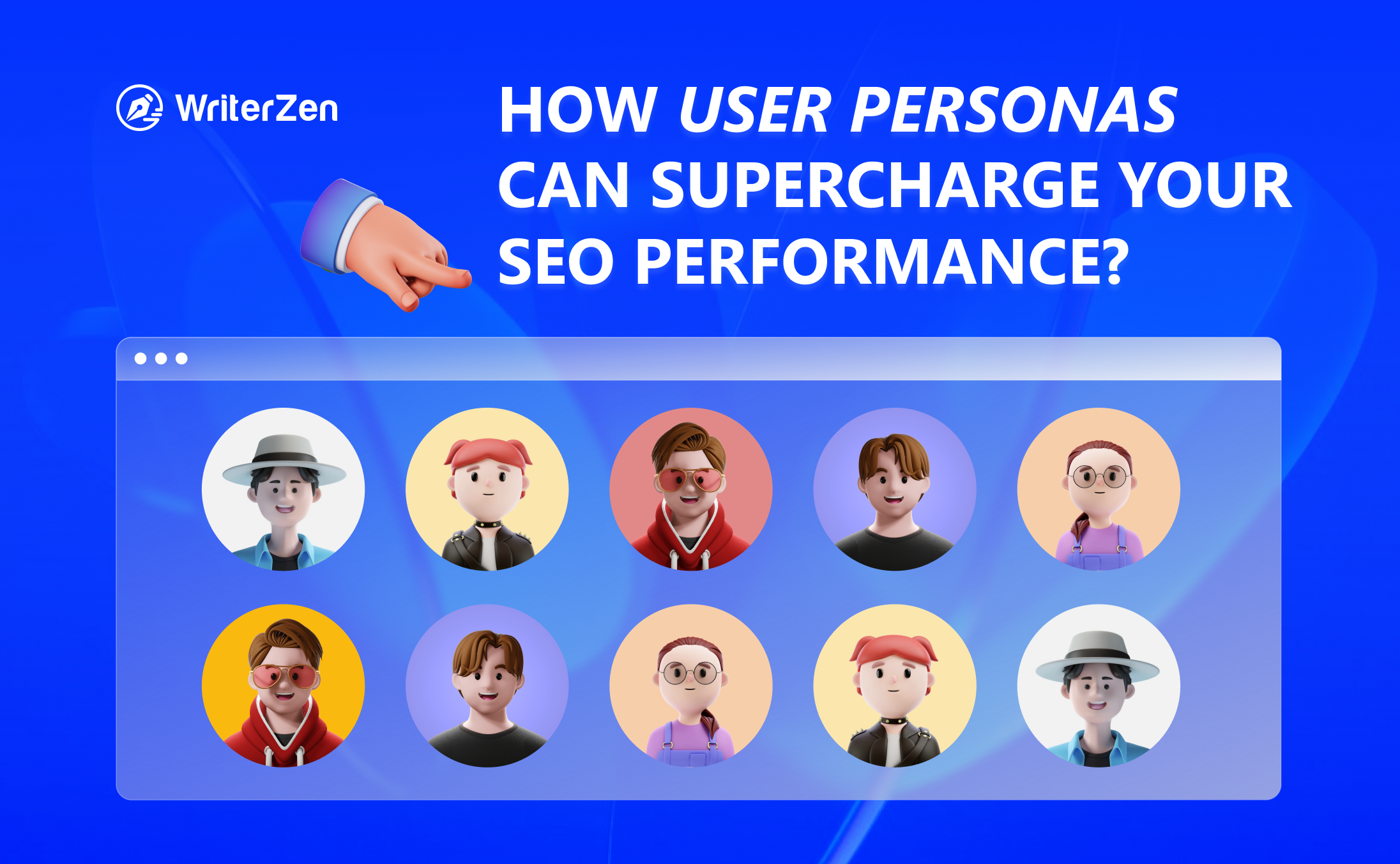Content repurposing is a valuable strategy for maximizing value. Although the concept has got its well-deserved place, people still view repurposing only as a time-saving hack. But in reality, the time you save is just the icing on the cake.
It's important to note that simply copying and pasting content from one platform to another is not effective repurposing. Instead, the key is to adapt and modify your content to fit the expectations of each marketing channel.
If you want to learn how to get more value out of the content you create, keep reading. In this guide, we'll show you the wrong and right ways to repurpose content, and we'll provide five real-life examples of how others have successfully repurposed their content.
So, Why Should You Consider Repurposing Your Content?
Content repurposing offers a plethora of advantages. We have outlined the significant once here:
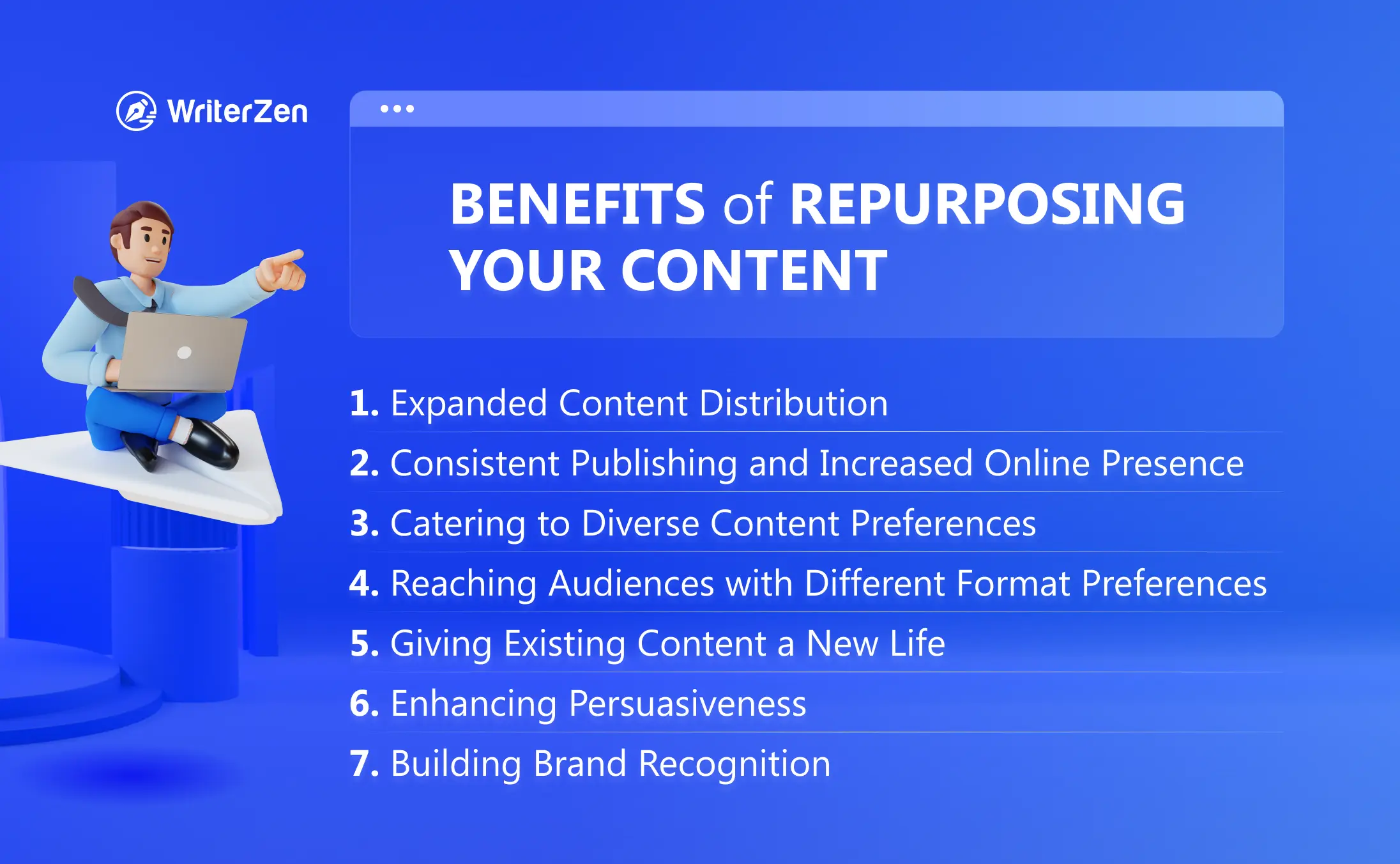
Expanded Content Distribution
Repurposing content, such as transforming a written piece into audio content, allows you to reach a wider audience and extend the reach of your content. It ensures that you're not solely focused on creating new content but also promoting it effectively.
Consistent Publishing and Increased Online Presence
Repurposing content enables you to maintain a steady stream of high-quality content across different channels without the constant pressure of creating new content from scratch. This helps you grow your online presence and engage with your audience consistently.
Catering to Diverse Content Preferences
Not all members of your audience prefer consuming the same type of content. By repurposing your content into various formats, you can cater to different content preferences and ensure that you're not alienating any segment of your target audience. It's a way to meet their content demands by repackaging existing content.
Reaching Audiences with Different Format Preferences
One of the significant benefits of content repurposing is the ability to reach audiences who have diverse format preferences. Not all individuals in your target audience prefer consuming content the same way. Some may prefer reading articles, while others may prefer watching videos or listening to podcasts.
Offering content in their preferred formats, you can increase the chances of capturing the audience’s attention and fostering deeper engagement with your brand.
Giving Existing Content a New Life
Repurposing content gives your existing pieces a fresh lease of life. It allows you to reintroduce valuable information, insights, and ideas to your audience in a way that feels fresh and current. Over time, even the best content can become buried in the depths of your blog archives or social media feeds, losing visibility and relevance.
Enhancing Persuasiveness
Repurposing content not only helps you educate your audience but also strengthens your persuasive abilities. By consistently delivering valuable content, you build trust with your audience at a faster pace.
Trust is a crucial factor in decision-making, and when prospects trust your brand, they are more likely to consider your offerings and make purchasing decisions more swiftly.
Building Brand Recognition
Through content repurposing, you can reinforce your brand identity and increase its visibility across multiple platforms. And that helps you establish yourself as an authoritative figure in your industry. As a result, your brand will stay on top of your potential customer’s minds when they are ready to make a purchase.
So you have read all the good things about content repurposing, but one thing to keep in mind is that simply repurposing content without any prior strategy may not bear any fruit. Most people don’t realize the mistakes they make when repurposing existing content and get frustrated upon not seeing the desired outcomes.
The Wrong Approach to Content Repurposing No One Is Talking About
There are a few wrong approaches to content repurposing that have been widely practiced by companies. We dug through these approaches and asked experts to highlight the ways to solve them.
Only Looking for Well-Performing Content to Repurpose
Ross Simonds identifies it as one of the most common traps that content marketers fall into. Once a new piece of content drives a ton of traffic or shares, they start repackaging it into different formats to squeeze the remaining drops of value out of it.
Positive metrics can sometimes make marketers think it's okay to reuse content from the original source. However, by the time they finish creating all the additional repurposed content, it's often too late. Not only does the new content not perform well, but it also disrupts your publishing schedule because resources were directed toward something new.
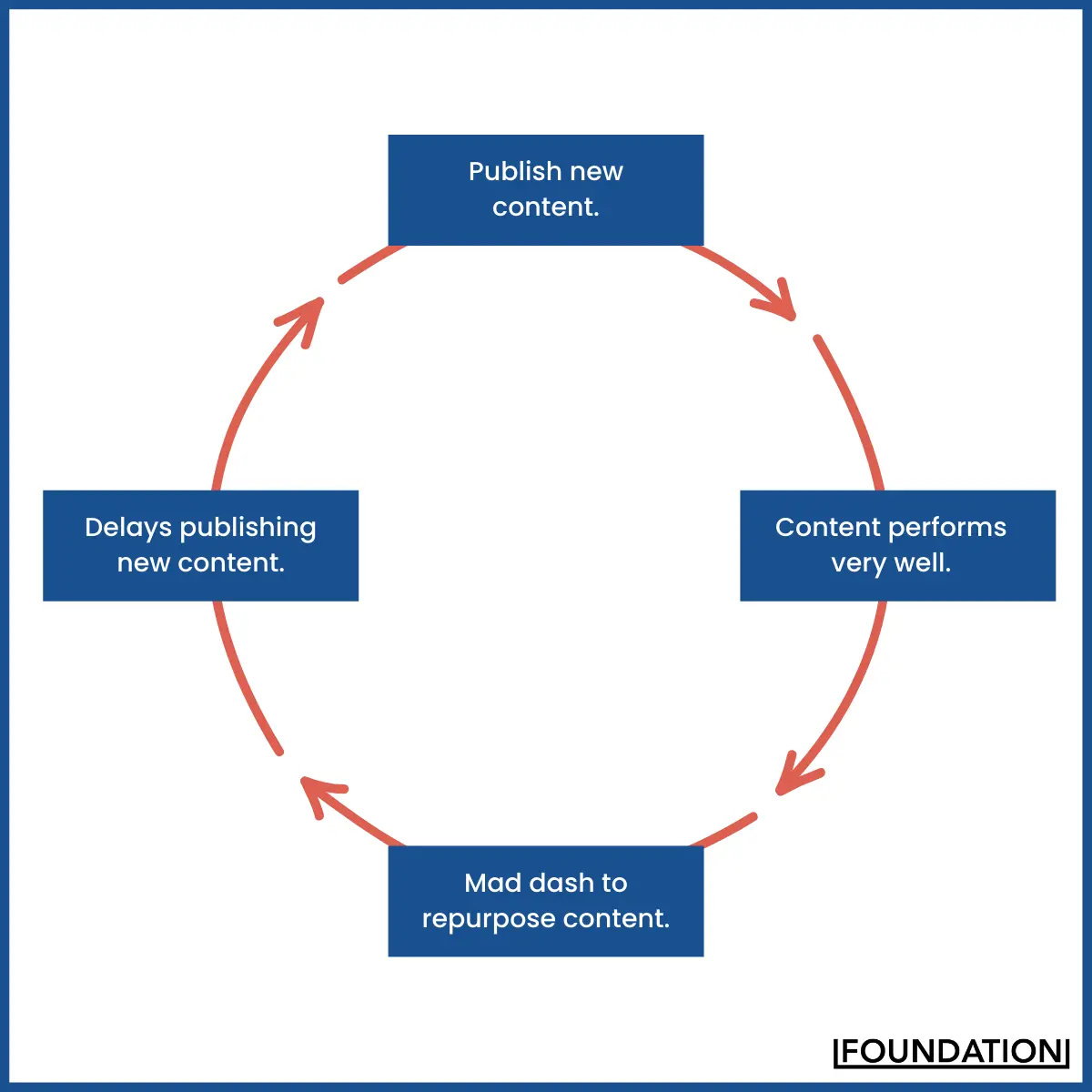
Credit: Foundation.inc
Ross also shares a perfect solution to this lose-lose game which will revolutionize your content strategy. He calls it “Active Repurposing.”
The difference between both approaches to repurposing is that instead of waiting for a piece of content to become popular and then reacting to it, your team plans for it from the start. In that way, you’re not waiting until after you publish a piece of content, you start repurposing and creating the original content simultaneously.
Having No Plan in Advance
Content repurposing starts with a strategy and plan. You can’t simply squeeze content repurposing into your schedule like that. When you treat repurposing as an afterthought rather than an integral part of the content creation process, it leads to missed opportunities.
So what can you do to avoid this mishap to drive the best result?
Plan for ways to reuse the content during the outlining stage.
This way you can identify different formats and platforms where the content can be utilized, reaching a wider audience and maximizing its impact.
Copy-Pasting the Same Content
There’s a difference between repurposing and reposting content. Repurposing emphasizes repeating the core idea of one topic and creating content in different formats. Reposting content means copy-pasting one content piece on different channels.
Justin Simon says, “Copy-pasting content is becoming an easy out for a lot of folks. But what works on one platform probably won't work on another. Every single piece of content should be custom tailored for the specific audience and platform. You may not need wholesale changes, but small tweaks can make a big impact.
Mina Mesbahi, on the other hand, shares a slightly different view on this matter. She says, “If their audience doesn't have much overlap on the different channels, then it's ok (as long as they're still optimizing the format, angle, hook, etc., for the channel). But if you know there's a massive overlap, then you have two choices:
-
Don't share them all in parallel and wait a few weeks or more, depending on your cadence.
-
Put more effort into changing the creative and the hook.
Ignoring Content Channel Fit
Repurposing content often involves adapting it to fit a different format or medium. However, not considering content channel fit may lead to insufficient modifications or improper adjustments. Certain content elements, such as visuals, tone, or delivery style, may need to be altered significantly to align with the target channel.
Each content channel has its own unique audience and user expectations. Neglecting content channel fit means overlooking the preferences, habits, and behaviors of the target audience on specific platforms.
By failing to adapt content to suit the channel, you may miss out on opportunities to reach a broader audience or effectively connect with the existing one. This can limit the reach and impact the effectiveness of the content.
Practical Tips to Repurpose Content
Use AI Tools to Create Summarized Copy from Posts
While you could read through each entire blog post and write a summary, today’s AI writing tools make the process much quicker.
For example, you can use any AI tool to highlight features to paste in an article and receive back a summary, meta description, LinkedIn copy, and pre-written Tweet. You can tweak as needed for your tone and voice, then add a copy to the document of your top-performing posts.
Another strategy that Justin Simon recommends is pulling headers from articles to create themes around social media posts.
Adopt a Distribution-First Mindset
Justin Simon touches on a concept he calls a distribution-first mindset.
“Distribution and repurposing shouldn't come when the blog, video, or podcast is finished and you're scrambling to figure out what to do with it. You want to know exactly what is coming from that content before you hit publish.”
"Those ideas need to be part of creating the original content. They can affect the format, design, and information. I like to include the distribution plan as part of the outline phase. That way, you can plan what other content and channels you want to include,” he says.
Ideally, don’t wait until months after publishing a blog post to repurpose it. The best practice is to bake it into your creation process so you get into the habit of repurposing. You'll ultimately cast a wider net when you distribute and prevent your good content from sinking into the internet depths.
Serve Your Audience on the Channel You’re Sharing on
Finally, it’s time to schedule your tweets, LinkedIn posts, and newsletters using the copy you generated earlier.
Remember: you’re creating content for unique social media platforms. Like most things in life, there aren’t shortcuts—what performs well as a tweet thread won't deliver the same results when copied and pasted into a LinkedIn post.
You can use the same ideas and even some of the same text, but the formatting should cater to the platform. Here are a few practical examples.
LinkedIn is best for long-form social content. LinkedIn carousels are another popular format, which is more visual than simple text posts. Twitter works best for short and punchy.
Examples of Repurposing Content
Here we share real-life examples to show you content repurposing in action.
Turn Your Blog and Social Content into a Newsletter Content
Repurpose your blog post introduction as newsletter content, offering a preview of the topic and linking to the full post for in-depth exploration.
This approach adds value to your email list while driving traffic to your blog. Additionally, incorporate the insights you've shared on social media into your newsletter. Consider including screenshots of your posts or embedding tweets in the email, supplemented with fresh information.
To simplify the process, utilize a template like the one provided below for your newsletter.
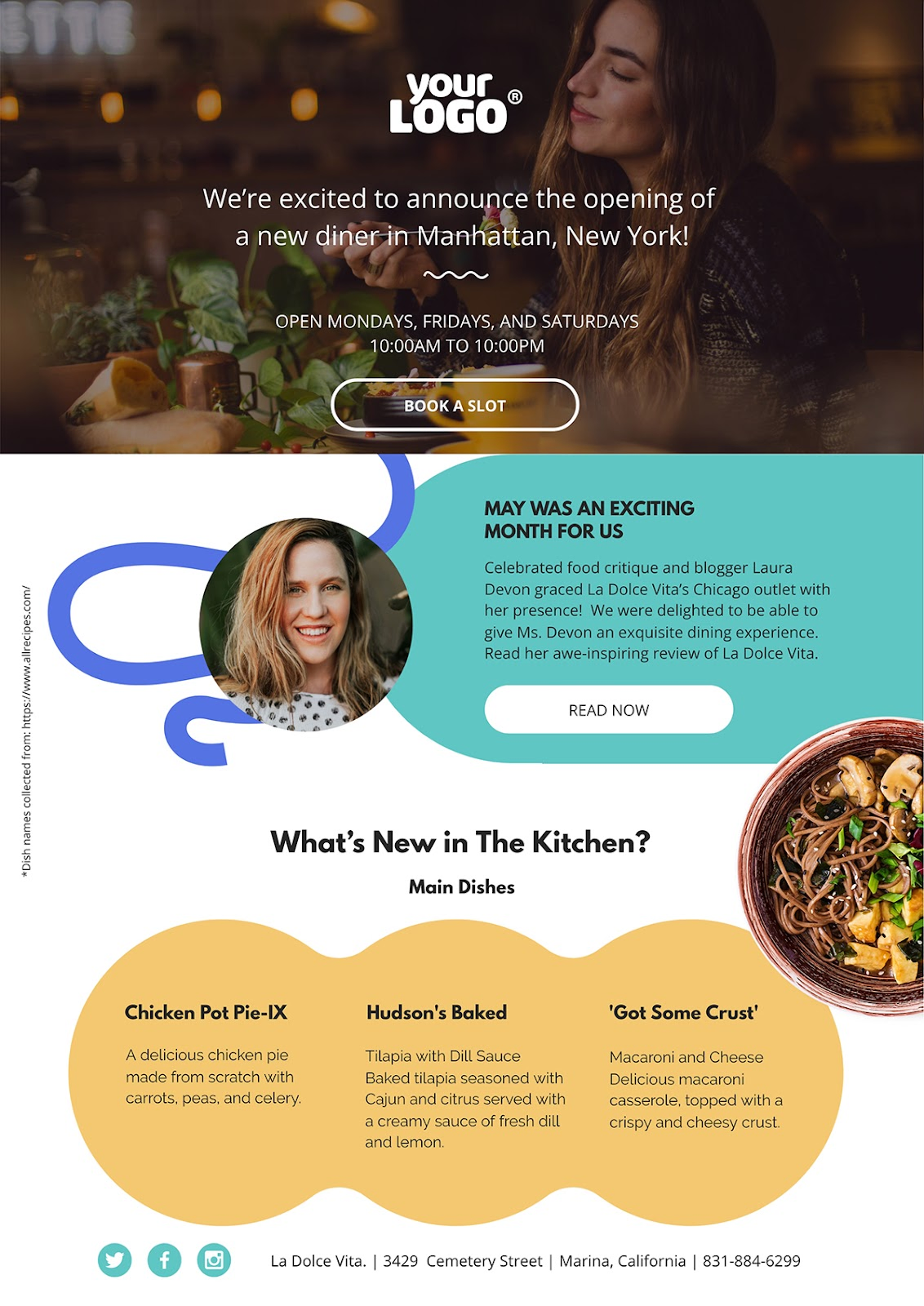
Turn Your Blog Post Into a SlideShare Deck
While there has been some questioning around its long-term future lately, SlideShare is an awesome place to share presentations and slide decks. Your blog post should easily have enough text and images to repurpose into a slide format (and you might even want to keep this in mind as you’re writing your post).
This isn’t too difficult, but there are some steps to follow:
-
Break down the main points of your blog post: If you created an outline for your blog post, your sub-headers could each be a title slide.
-
Resize images to fit your slide presentation: You can borrow graphics from your blog post but do make sure they look good.
-
Consider embedding your slide deck back in the original blog post: This is a great way to offer people a more condensed version of your post if they'd prefer to click through slides than read.
Repurpose Content from Research Reports as Blog Posts and Social Content
As with recycling eBook content, identify important findings from your research reports.
From there, design visually engaging graphics featuring those findings and write a blog post on the topic.
Make sure you alter the size of the graphics so that you have both blog post graphics and social media graphics ready in the correct dimensions.
This way, you can repurpose report content as a blog and social media content. Here’s an example of Erudit.

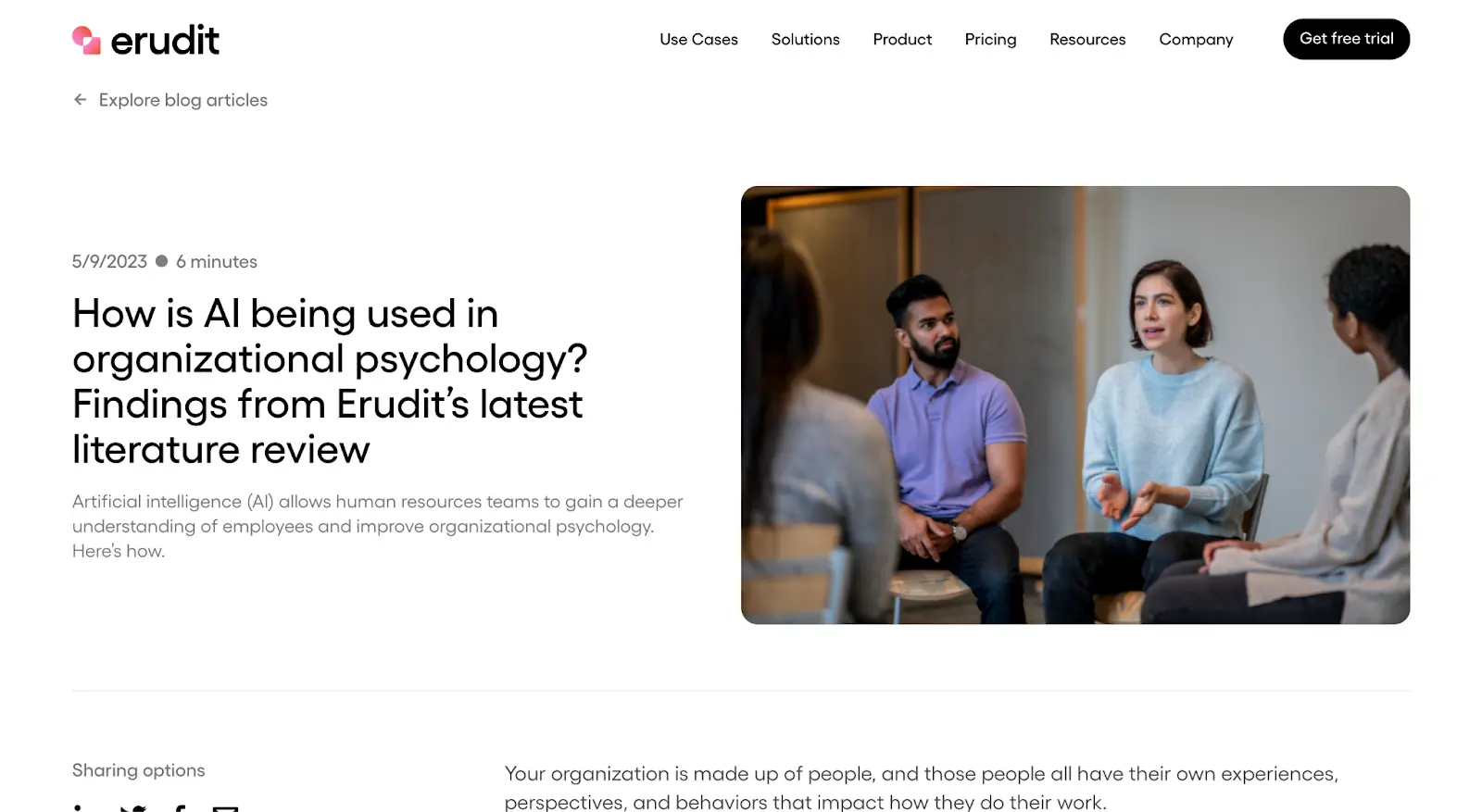
Stitch Individual Videos into a Course:
WriterZen uses individual videos in a cohesive course. This is a great example of content repurposing which you can also follow.
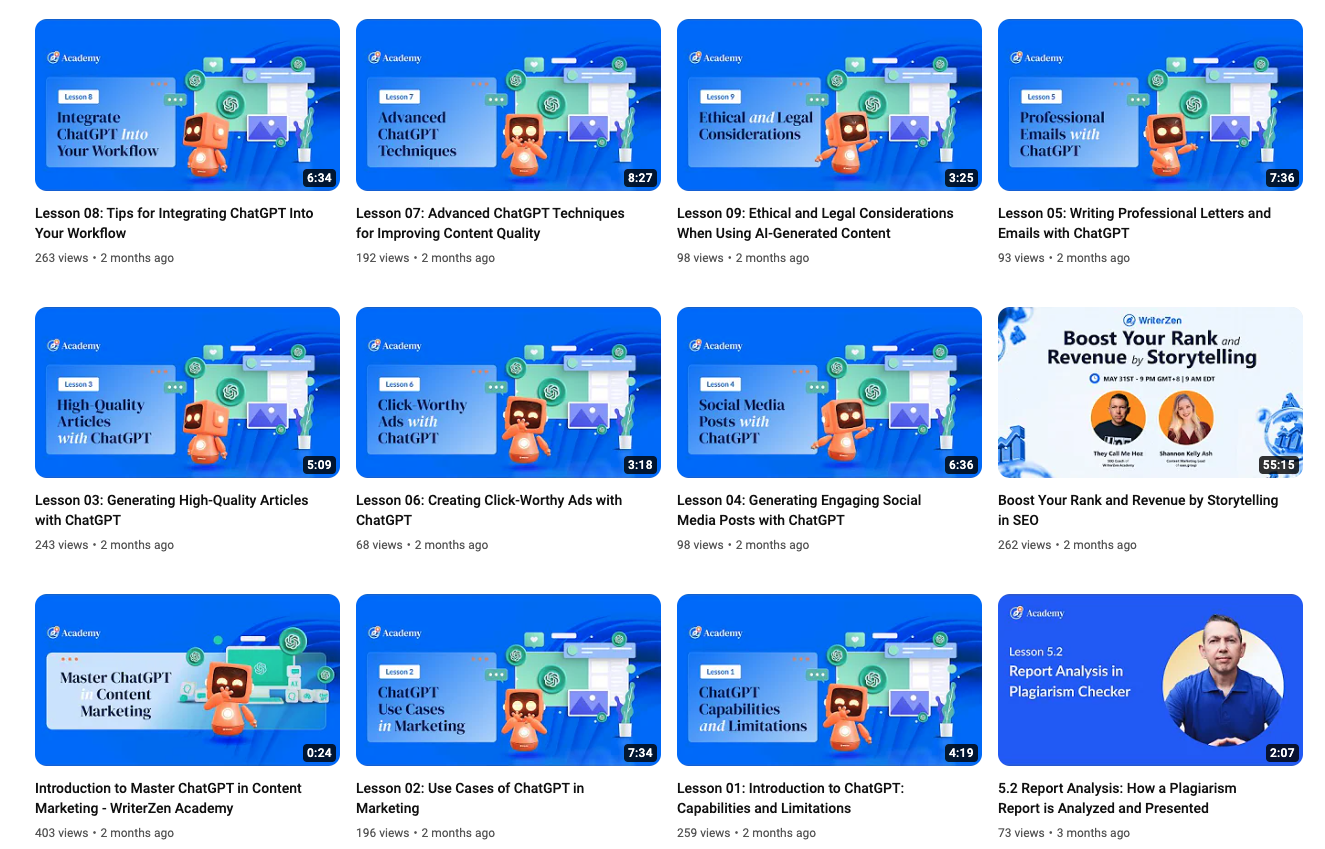
Create Twitter Threads from Blog Posts
Twitter threads have recently become a highly-consumed content type that’s well appreciated. Instead of thinking of new ideas and creating new content for threads, go ahead and reuse takeaways from your blog posts into Twitter threads.
For creating a winning Twitter thread, it’s essential you first test out how your audience reacts to a topic by sending out a tweet or two on it. If the response is good, explore the topic deeper by creating a repurposed thread on it.
Here’s Sparktoro doing the same:
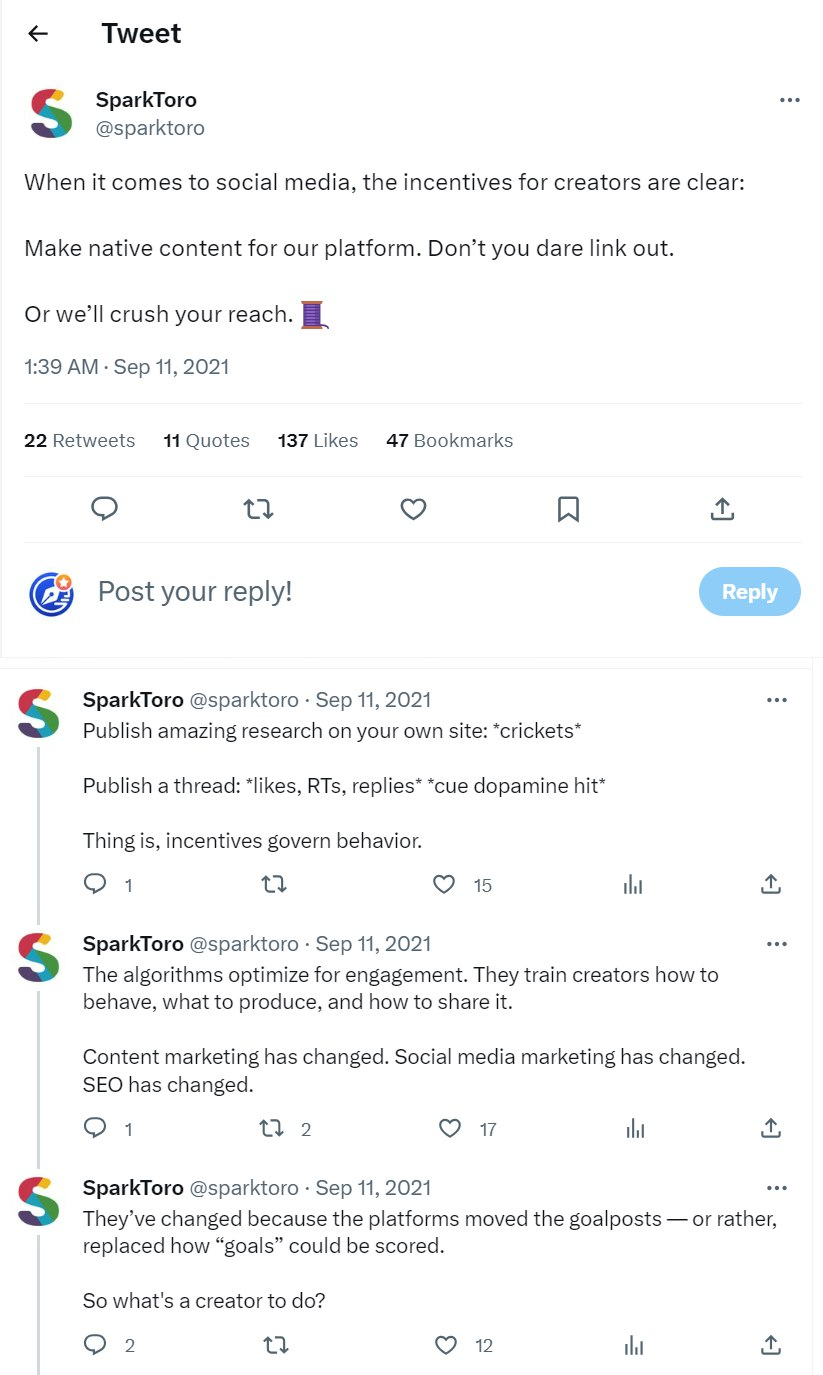
Transform Your Written Content into Engaging Videos
Take your research reports or blog posts and transform them into captivating videos that highlight key findings or discuss the topics you covered.
If you don't have a YouTube channel, you can still leverage video by creating Loom video tutorials based on your blog content. Embed these videos in your blog to increase visitor engagement and time spent on your site.
Additionally, share these Loom videos on your social media profiles and in your email newsletters to reach a wider audience.
Repurpose Your Blog Content into Audio Formats
Offer an alternative way for content consumers to engage with your blog content by creating audio files. By sharing these audio versions on your blog posts, readers who prefer listening can tune in instead of reading through the text.
You can also explore the option of repackaging your blog content as podcast episodes or vice versa, extending your reach to podcast listeners.
Consolidate Related Blog Posts into an Insightful eBook
Take a collection of blog posts that cover similar topics and transform them into a comprehensive eBook.
This allows your audience to access valuable information in a more cohesive and organized format. Additionally, consider converting newsletters that discuss the same topic into a round-up blog post or incorporate the key takeaways into slides that can be uploaded to platforms like SlideShare.
Transform Blog Posts into Downloadable PDFs or Gated Content
Give your readers the option to access your blog content in PDF format, making it easier for them to save, share, and refer back to later. Alternatively, take the steps or instructions shared in your blog posts and convert them into a checklist or template.
By gating this valuable content, you not only repurpose your existing material but also have the opportunity to grow your email list by requiring visitors to provide their email addresses to access the gated content.
Final Thoughts
Repurposing content offers significant advantages for SEO, expanding your reach. It shouldn’t be an afterthought. Following the precise examples outlined, you will maximize the value derived from your content in a highly efficient manner.
This comprehensive guide empowers you to not only extend your reach to new audiences but also enhance your online presence without the need for generating fresh content. A single story has the potential to generate numerous content pieces.
By ensuring that your repurposing endeavors prioritize adding value to the original content, you increase the likelihood of success.


